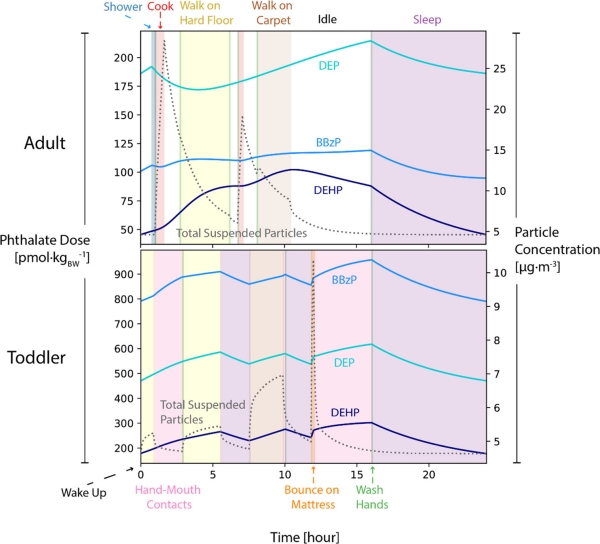ABICAM scientific programming tutor

I was hired as a Python and computational math tutor by a fellow Ph.D. student to help him implement a simulation of an “Activity-Based Indoor Contaminant Assessment Model” (ABICAM). The model tracked the exposure of semivolatile organic compounds (SVOCs) for humans inside a workplace or home environment throughout a day, while the occupants performed various activities.
This was a novel approach, because nearly all previous models for chemical exposure were based upon the steady-state solution of an inactive person. Using this simulation, Jacob gained insights into:
- time to reach the steady-state exposure;
- effects of aerosols “scrubbing” SVOCs from the air;
- the significance of methods to reduce exposure, such as cleaning, changing protective equipment, and ventilation; and
- propogation of SVOCs from and through clothing.
Papers published using this work
- Jacob Kvasnicka et al. Transient Multimedia Model for Investigating the Influence of Indoor Human Activities on Exposure to SVOCs
- Jacob Kvasnicka et al. Modeling Clothing as a Vector for Transporting Airborne Particles and Pathogens across Indoor Microenvironments
- Jacob Kvasnicka et al. Textile Washing Conveys SVOCs from Indoors to Outdoors: Application and Evaluation of a Residential Multimedia Model
